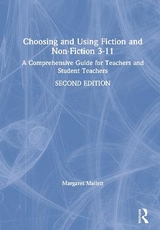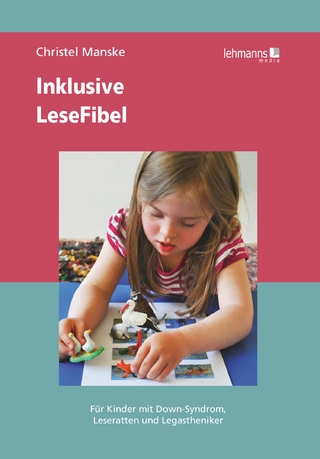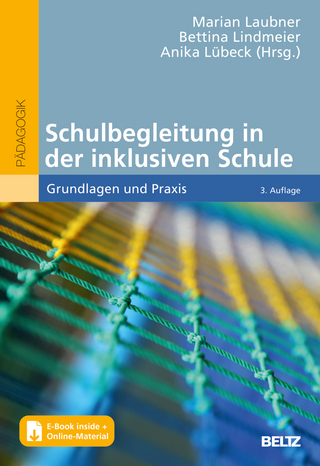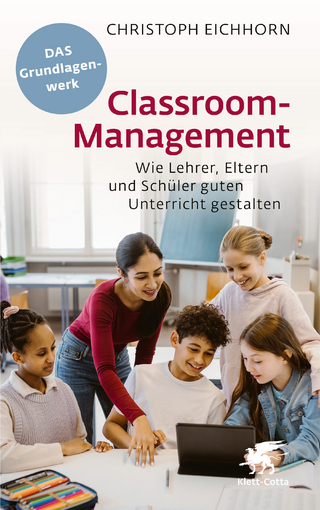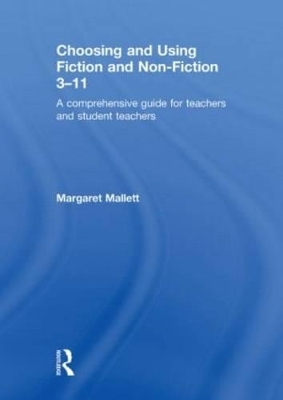
Choosing and Using Fiction and Non-Fiction 3-11
Routledge (Verlag)
978-0-415-48458-9 (ISBN)
- Titel erscheint in neuer Auflage
- Artikel merken
Winner of the United Kingdom Literacy Association's Author Award 2011 for its contribution to extending children's literacy.
Praise for the book:
'This book is about making readers. A compact summary of its contents would not do it justice. It is the accountof a life's work and it deserves thanks and readers. *****'. - Margaret Meek, Books for Keeps on-line, Number 185, November 2010.
'This book is a cornucopia of varied pleasures, offering something for all tastes, presented with an awareness of the complexities of the field and communicated with commitment, enthusiasm and deep knowledge'. - Eve Bearne, English 4-11, the primary school journal of The English Association, Number 42, Summer 2011.
Choosing and Using Fiction and Non-Fiction 3-11 is a guide to the many kinds of text we want children to encounter, use and enjoy during their nursery and primary school years. So children’s non-fiction literature – including autobiography, biography, information and reference texts – is given equal status with fiction – nursery rhymes, picturebooks, novels, traditional tales, playscripts and poetry. The author addresses important issues and allows the voices of teachers, reviewers and children to be heard. The book supports teachers as they help children on their journey to becoming insightful and critical readers of non-fiction and sensitive and reflective readers of fiction. It also contains suggestions for practice which are in the spirit of the more flexible and creative approach to learning towards which primary schools are moving.
It includes:
help on using criteria to select quality texts of all kinds;
annotated booklists for each kind of text for different age groups;
suggestions for keeping a balance between print and screen-based texts;
case studies showing teachers and children using texts in interesting and imaginative ways to support learning in English lessons and across the curriculum;
advice on developing children’s visual and multimodal literacy;
guidance on using the school library and embedding study skills in children’s wider purposes and learning;
critiques of key theoretical perspectives and research projects.
Although the main readership will be primary and student teachers, it is hoped that the book will be of interest and use to anyone concerned with the role of texts in children’s learning.
After teaching in primary schools, Margaret Mallett worked on BA (Ed.) and MA in Language and Literature courses at Goldsmiths College. She is now an Emeritus Fellow of the English Association and a member of the English 4-11 editorial board.
List of Figures List of Boxes Acknowledgements Introduction About this book Part 1: Fiction 1. Introduction 2. Children’s literature: some key strands 3. Fiction in the classroom: resources, organization of teaching and learning, some issues and assessment and record keeping 4. Picturebooks 5. Traditional Tales 6. Genre Fiction 7. Longer stories and children’s novels: an introduction 8. Animal stories 9. Realism: domestic, adventure and school stories 10. Historical novels: historical novels, timeslips and war stories 11. Fantasy stories and novels 12. Building reading stamina 13. Using longer stories and children’s novels 14. Playscripts 15. Poetry in the Early and Primary Years 16. Poems Playing with Language 17. Poems with distinctive forms, rhythms and /or rhyming patterns 18. Story or narrative poems, classic poems and poems from other cultures and traditions 19. Poems with freer, less traditional forms and patterns Part 2: Children’s non-fiction literature 20. Introduction 21. Children’s non-fiction literature in the twentyfirst century 22. Models of non-fiction kinds of learning and some guiding principles 23. Non-fiction and classroom organisation, gender issues and assessment 24. Classifying non-fiction text types and thoughts towards a critical approach 25. Introducing chronological text types: recount and instruction 26. Recounts 27. Instruction texts 28. Introducing non-narrative non-fiction texts: report, explanation, discussion & persuasion and reference 29. Report: choosing texts and resources 30. Explanation texts: choosing texts and resources 31. Using report and explanation texts 32. Argument- discussion and persuasion 33. Reference texts 34. Using the school and classroom libraries Children’s books and resources mentioned Bibliography Websites and other useful information
| Erscheint lt. Verlag | 24.6.2010 |
|---|---|
| Zusatzinfo | 70 Illustrations, black and white |
| Verlagsort | London |
| Sprache | englisch |
| Maße | 174 x 246 mm |
| Gewicht | 885 g |
| Themenwelt | Sozialwissenschaften ► Pädagogik ► Schulpädagogik / Grundschule |
| ISBN-10 | 0-415-48458-8 / 0415484588 |
| ISBN-13 | 978-0-415-48458-9 / 9780415484589 |
| Zustand | Neuware |
| Informationen gemäß Produktsicherheitsverordnung (GPSR) | |
| Haben Sie eine Frage zum Produkt? |
aus dem Bereich
